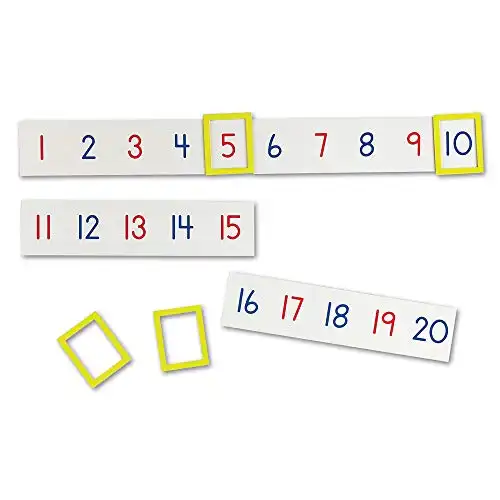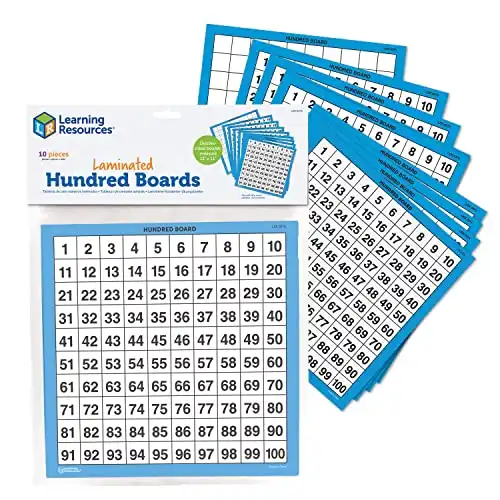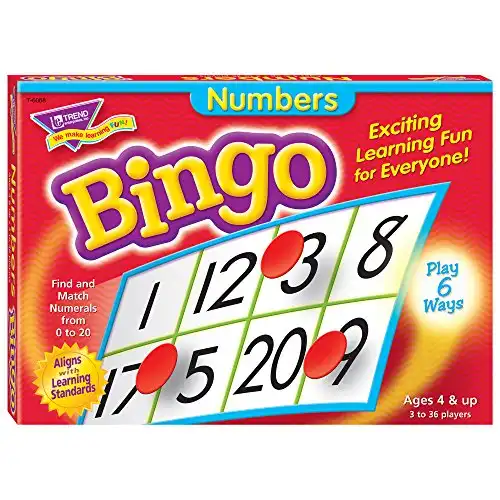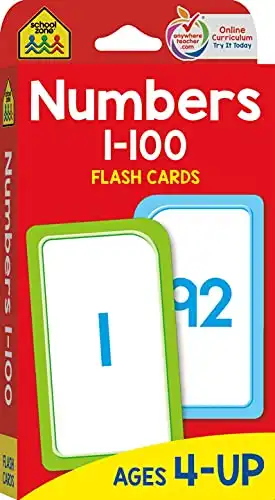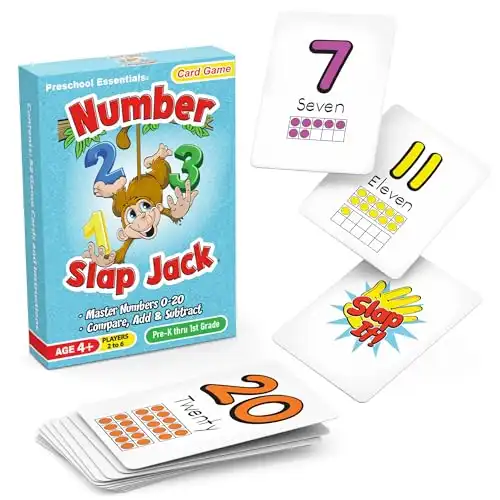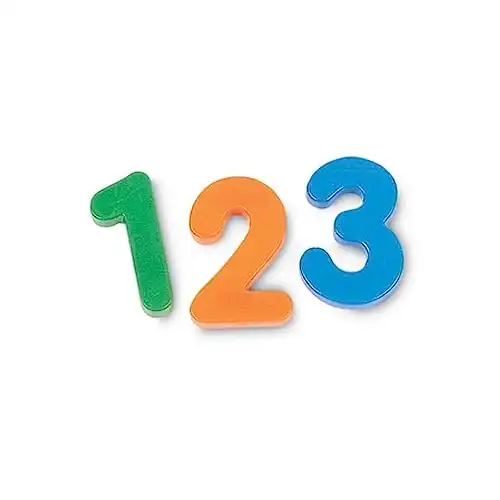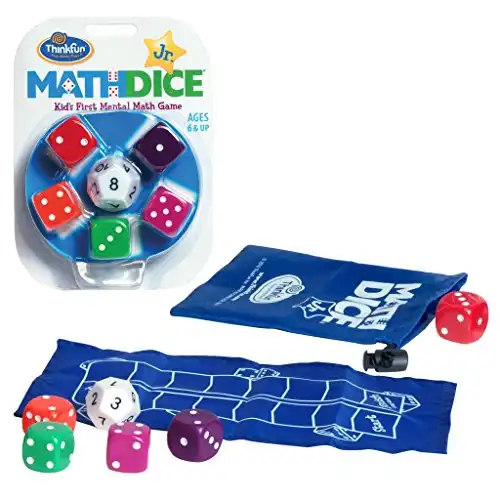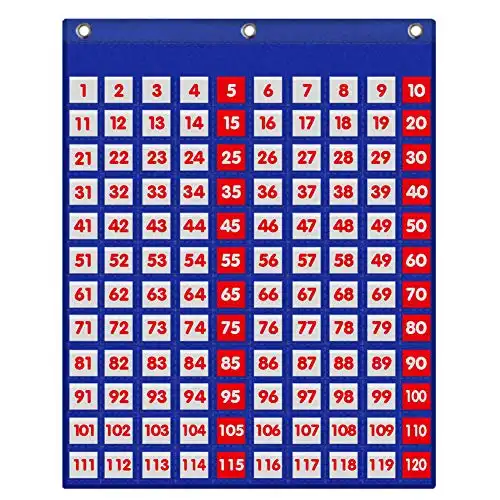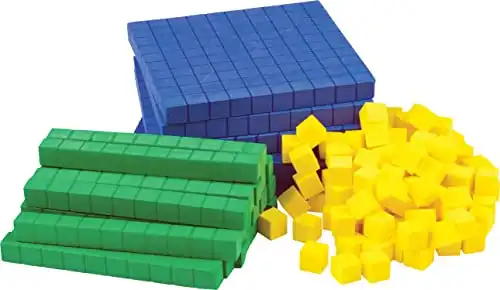Math tips and strategies for learning numbers to 100 or 120 in Kindergarten, first grade, and second grade. An extensive list of number activities to 100 and resources are included: books, materials, lesson ideas, and FREE activities!
The math tips and strategies you need for learning numbers to 100 (or 120) are right here. You will have everything you need to easily implement and bring a wealth of number sense activities, games, and centers into your classroom or home.

The activities, books, resource suggestions (including a FREE one) cover a ton of number sense concepts to 100/120 and are perfect for primary grades. Plus, find valuable number activities to 100, as well as materials, manipulative suggestions, and freebies you can access today.
Why is Teaching Numbers to 100 so Important?
Children need a multitude of opportunities to learn and experience numbers. Learning to count, identify numbers, and understand quantity are just a few of the important concepts they must master. Repeated experiences build understanding and fluency with numbers. These experiences help expand understanding and learn new concepts. A strong number sense is vital for understanding more complex math topics.
The activities below are ones that have been used successfully. Use them as they are described or adapt them to your own needs. Be flexible. Have conversations about numbers and encourage questions. When there is an opportunity to order, count, match, or describe with a child, go for it! They benefit from seeing numbers in natural, fluid ways. Make time for fun and engaging number activities daily and watch fluency develop.
Number Activities and Concepts to 100
Counting to 100
It is very important for children to count every day. Repeated oral counting helps them hear what numbers sound like and to learn their order. Using math manipulatives, like counting chips, can help build a connection to oral counting and counting objects. This one-to-one counting is an important skill that needs to be practiced often.
Counting to 100 Activities
- Go on a counting walk. Find things in nature or on the playground, or within the school building to count as you go by.
- Playing “Around the World” using numbers is a fast and easy game to play that gets everyone involved and paying attention. Start with a certain number and continue to count orally as you go around the circle.
- You can always use small items (such as popsicle sticks) for children to easily hold in their hands and manipulate while counting.
- It’s handy to have plenty of small items like mini-erasers, marbles, dry beans, polished rocks, and plastic gems. Children can use them to practice counting.
- Counting on a number line is helpful to see the progression of numbers. Place a number line on a wall in the classroom and use a pointer to count along the line.

- Using base ten blocks is a great way to visually grasp number sense to 100. Let children practice substituting ones for tens, tens for hundreds, and placing ones on the 100 block.
Skip Counting Activities to 100
- Skip counting charts showing groups of items for visually skip counting work wonders. Charts showing hands and feet (for 5 or 10), glasses (for 2), and tricycles (for 3) are helpful for visualizing.
- Count by 2’s with pipe cleaners and beads. Move two beads to the end as you count up.

- There are important patterns you should point out on the 100’s chart. Having children color in all the twos, fives, tens, etc is a great way to help them visually grasp skip counting.
- When skip counting aloud as a class, or during instruction, be sure to count in a way that children can hear the word patterns and rhythm present. This helps them remember to skip count even if they haven’t yet grasped number sense.
- Picture puzzles are a great way to help children practice skip counting. When piecing together the picture in the puzzle, they can self-check whether they are skip counting correctly.
- Using small items or tools such as beans, dabbers, stickers, or blocks can help students learn to skip count. By grouping to count they are in control of their visual understanding and can practice at their own pace.
Reading & Writing Numbers to 100
Teachers often look so hard at trying to find “fun” and “innovative” ways to teach and sometimes neglect the simple act of reading and writing during explicit instruction. However, once you’ve done that, there are definitely some other ways that will spice up your lessons while practicing reading and writing numbers to 100. Here are a few ideas:
Activities
- An activity, as simple as writing a number on the board and letting the class try to call out the number, works well. For an exciting twist, let children take turns writing a number and their classmates attempt to call it out.

- “I have, who has” card game is a fun game that can be played with cards. Kids enjoy this game that keeps them on their toes and ready to respond.
- Coloring is an activity that many children find relaxing and joyful. Use a “find and color” sheet to review numbers to 100.
- The popular game of bingo is a fun way to practice numbers. Make sure students switch their cards after every round so that they can practice many different numbers during the game.
- Hang numbers in various places around the room and hold a scavenger hunt for them!
- Writing numbers is the definitive manner in which the brain learns to memorize the shape and details of each number. Don’t neglect this important practice that helps children recognize them.
Hundreds Chart Number Activities to 100
There are so many things you can do with a hundred chart! That’s why it’s often the first thing teachers use when teaching numbers to 100. The activities are endless, but here are a few that you and your students will enjoy.
Activities
- Simple games such as Roll to 100 and Race to 100 can be played after a lesson on numbers as a fun brain break.
- Use a giant numbers chart to arrange number cards in order. The children can help you place them on the correct square upon the chart.
- An easy thing to do is to have children cut apart their own hundreds chart and then try to put them back together again like a puzzle. This gives them cutting practice as well as numbers practice!
- Give children a blank number chart and have them write in the correct numbers. You can post a large classroom chart for reference if they need it.

- Laminate a number chart and have children work in partners to cover and guess numbers in a “guess my number” game.

- Draw a 10×10 grid on the board and have children fill it in.
- Give each child a hundred chart and counting chips. Call out random numbers and have them cover them with the counting chips.

Ordering & Comparing Number Activities to 100
Provide opportunities for kids to put numbers in order. While they put numbers or objects with numbers on them into the correct order they are counting and building number sense. As familiarity with numbers grow, so does an ability to compare numbers with each other. Provide opportunities to compare numbers daily. Ask questions about which number is bigger, smaller, or the same. And, throw in a few of these activities to make lessons exciting!
Activities
- Using picture puzzles that order numbers from smallest to largest or from largest to smallest is great for letting children practice ordering and comparing.
- Print out number cards and laminate them. Have children draw two cards and compare which is larger or smaller. Have them draw more than two cards and place them in order.
- Use clip cards that ask children to place a clip on the largest number, or the number that comes first in a sequence. These allow you to quickly gauge understanding.
- A number line is a great visual for teaching and practicing order and comparison. Let children point out or mark the numbers where they belong on the line.
- Bring out the hundred chart once again for these lessons. They can also be used for ordering and comparing by having children note where the numbers are found higher up or further down on the chart. Cut a chart into strips and have kids put the numbers on top.

- Teach the “alligator” visual rule with comparisons. Draw teeth within the symbols to show that the “alligator” is very hungry and only likes to eat the larger number.
- Label blocks or use number cards to give children a physical item to hold and manipulate to order and compare. Try putting the number trains to 100 in order in a pocket chart (Grab this FREE activity below!)
- Play a card game with a deck of cards in which children randomly pick two numbers. Ask them to compare them with a partner or place them in order, or on a number line, etc.

Place Value Number Activities to 100
Teaching kids about place value should begin with teaching them to see ten in many ways. Once you’ve taught numbers to 100 using several of the ways above, you can move on to illustrating numbers with base ten blocks and with other activities that teach place value. Here are some ideas to use in the classroom that teach and reinforce this concept.
Activities
- Snap cubes are a common manipulative found in almost every classroom. They are a great way to teach children the relationship between ones and tens.

- If you have base ten blocks, they are created primarily for teaching place value. Use them diligently and consistently to build number sense in a visual way while teaching place value.
- Ten frames are a helpful visual for many children. Add them into your instruction to show children another useful visual.
- Practice place value with a hundred chart by calling out a number and they find on chart. Play a game and give hints such as “there’s a 4 in the tens place, and a 6 in the ones place” and see if they can find the correct number.
- Handheld items such as popsicle sticks, beans, and mini erasers can be used to show ones and tens.

- Again, simply writing a number and drawing out how many tens and ones it contains is a simple but effective way to teach place value.
100th Day of School Activities
The winter months are often dreary and teachers find themselves in a rut. That’s why the 100th day is such a huge success. Teachers and students enjoy having a party, and what better party to have than to celebrate a big number – 100! It represents a lot of work and learning that has been accomplished, and you can use it to your advantage to teach an understanding of the number and its value.
Activities
- Be sure to check out this collection of 100 days of school activities that will make your celebration a huge success.
- Place a crown on their heads! That’s right, they’ll be proud to celebrate the number 100 all day long, and take this cute hat home to show their parents as well.
- Color pictures that have 100 items on them, or that require counting to one hundred (for instance, a dot-to-dot page).
- Dress up as 100 years old! Kids will enjoy pretending to be 100 and walking with canes, wearing gray wigs, and dressing in “old” styles.

- Eat a snack that has 100 pieces (such as 100 sunflower seeds, or 100 Nerds candies).

- Make 100th-day necklaces. These necklaces should have 100 beads or other items on them.

- Have children bring in a collection of 100 things to share with their classmates.

Number Activities to 100 Resources
The activities seen in this post can be found in various resources found on Teachers Pay Teachers. Click the images above to visit the unit that has the activity seen in the photo. Find out why teachers are loving the Mindful Math program for Kindergarten, first grade, and second grade.
Counting to 100 for Kindergarten
Mindful Math Kindergarten Curriculum
Numbers to 100/120 for First Grade
Mindful Math First Grade Curriculum
Number Sense (100 & 1000) for Second Grade
Mindful Math Second Grade Curriculum
FREE 100 Days of School Train Activity
This printable activity is a great way to practice numbers to 100. Build a train of numbers!
Click the image below to get your free copy.
Numbers to 100 Books

- One Watermelon Seed by Celia Lottridge – In this colorful book students practice counting to ten as Max and Josephine plant seeds in their garden. Next, the student counts by tens up to one hundred, as the plants are harvested. Finally, the students are challenged to find certain garden-themed pictures throughout the book. This simple book is a great way to build familiarity with numbers 1 to 100, while also teaching about how food is planted and harvested.
- One Hundred Hungry Ants by Elinor Pinczes & Bonnie Mackain – Learning numbers 1 to 100 includes more than just simply counting in order. Students must come to understand how individual numbers relate to the whole. This book helps students with this concept as it follows a line of one hundred ants to a picnic. In order to speed up the journey to the picnic, the ants arrange themselves in different groups- 2 groups of 50, then 4 groups of 25, and so on. It is a fun way to better develop the concept of numbers 1 to 100.
- 100 Snowmen by Jen Arena – This wintry story uses snowmen and their adventures to count, while at the same time introducing the more complex concept of addition. Each page contains an addition problem, correlating to the numbers in the story. In the end 100 snowmen join the fun.
- 1-2-3 Peas by Keith Baker – Using colorful pictures and simple rhymes, students learn the numbers 1 to 100. At first the numbers progress by one, but once twenty is reached, the numbers are counted by 10’s until they reach 100.
- Curious George Learns to Count From 1 To 100 by H.A. Rey – Students practice counting along with their favorite curious monkey in this book. Along the way, of course, George gets into mischief. Students get a lot of practice counting various objects that George encounters in the story.
- Count the Monkeys by Mac Barnett and Kevin Cornell – This fun book will keep the students turning the pages looking for the monkeys! Along the way, the students will encounter various animals to count. This is a great, interactive story that will entertain the students.
- 100 Bugs!: A Counting Book – Students will enjoy seeing the variety of bugs in this book as they make their way from 1
to 100. They will also learn different ways to make groups of 10. - 100 Animals on Parade! by Masuyuki Sebe
- Miss Bindergarten Celebrates The 100th Day Of Kindergarten by Joseph Slate
- 100 School Days by Anne Rockwell
- The Night Before the 100th Day of School by Natasha Wing
- 100 Ways to Make the World Better! by Lisa M. Gerry
- First 100 Numbers by Roger Priddy
- Betcha! by Stuart J. Murphy
- Counting by Henry Pluckrose
- 100 Things That Make Me Happy by Amy Swartz
- David Carter’s 100: Lift the Flaps and Learn to Count! by David Carter
- Stay In Line by Teddy Slater
- Place Value by David A. Adler
- Centipede’s One Hundred Shoes by Tony Ross
- What’s the Place Value by Shirley Duke
- From One to One Hundred by Teri Sloat
Materials for Teaching Number Activities to 100
- Mathlink Cubes – These are useful for students practicing one-to-one correspondence and counting to 100 by ones and tens.
- Magnetic Number Line 1-100 – This is a good tool for working on sequencing numbers, odd/even numbers, and number identification.
- Laminated Hundred Boards, Dry-Erase Counting Aid – Students always enjoy whiteboard activities. These hundred boards allow students to interact with the charts themselves.
- Numbers Bingo Game – Make practicing number identification fun with this Bingo game that everyone will love! Have students call the numbers, as well as play the game.
- School Zone – Numbers 1-100 Flash Cards – This is a basic set of flashcards that can be used in a number of ways with your students. Practice identification, skip counting, odd/even numbers, and play the game included in the pack.
- Eureka Classroom Supplies Learn to Count Counting Animals with Storage Tub – Use these colorful animals to reinforce one-to-one correspondence, sorting and counting.
- Number Slap Jack – a Fun Number Recognition and Counting Card Game – A fun game to practice numbers 1-20. Geared toward K-1st grade.
- Learning Resources Jumbo Magnetic Numbers – These magnetic numbers can be used in a variety of ways to support the practice of counting, number identification, and simple math equations.
- ThinkFun Math Dice Junior Game – This is a math game that is fun and also challenges students by using “mental math”. Students will have so much fun they won’t even realize they are practicing their math skills!
- Eamay Hundred Pocket Chart – A simple visual for teachers to use in various ways in their classroom. Students can interact with the numbers as well.
Teach More About Numbers
Building Number Sense free email series
PIN IT

FREE Number Sense Email Series
Sign up for the building number sense email series filled with effective strategies, must try activities, and FREE resources to build routines in your classroom. Everything you need to help kids grow their number sense and have fun at the same time!















